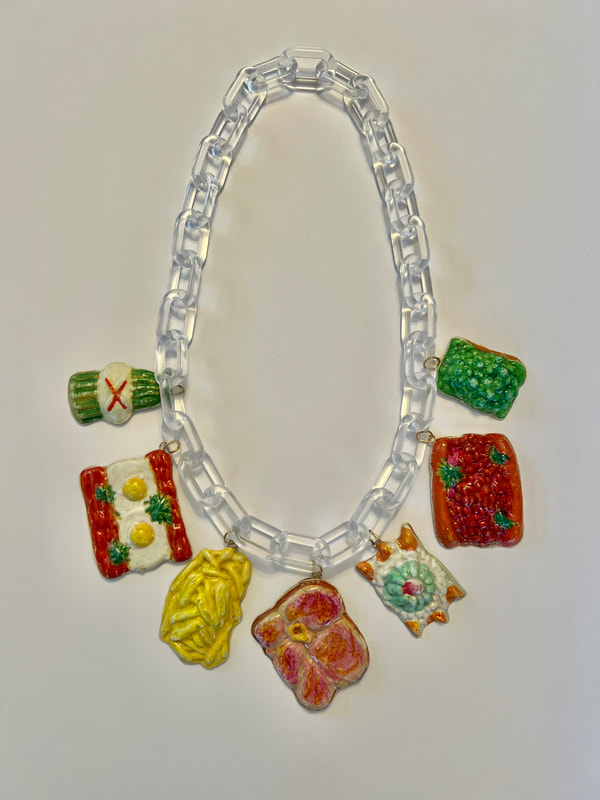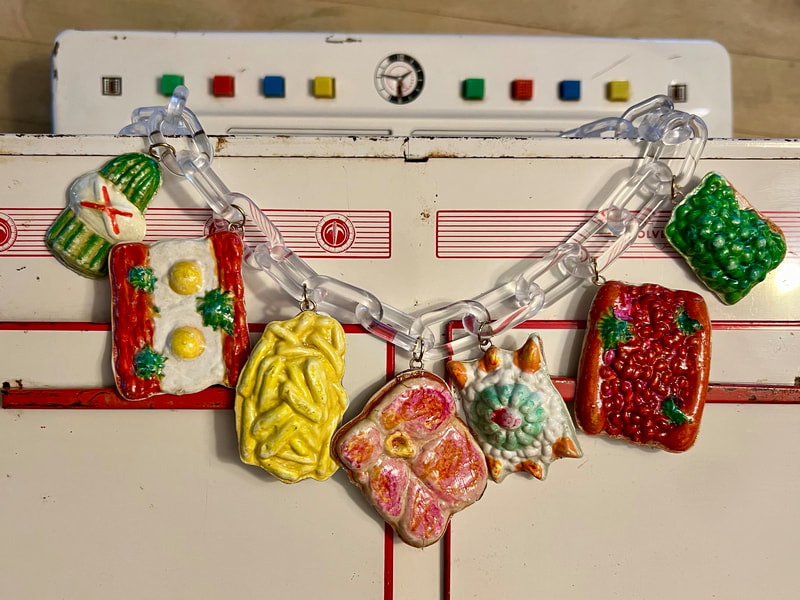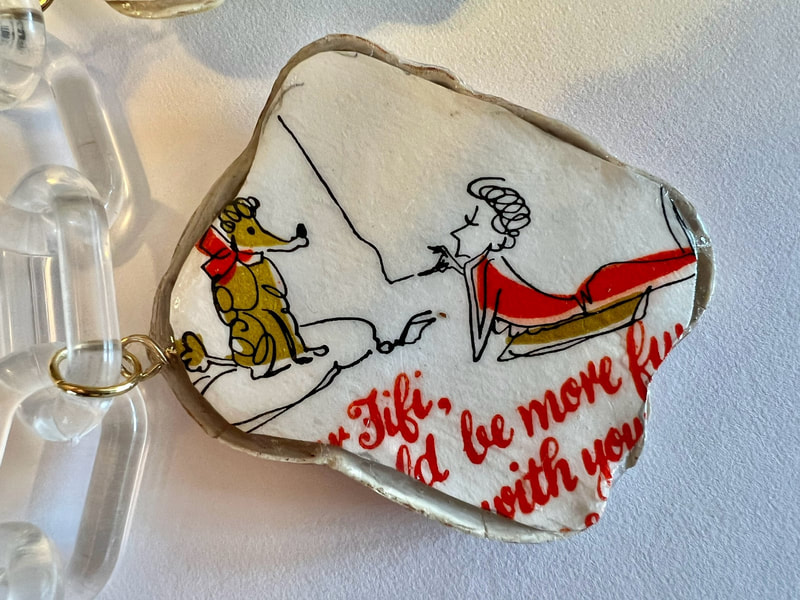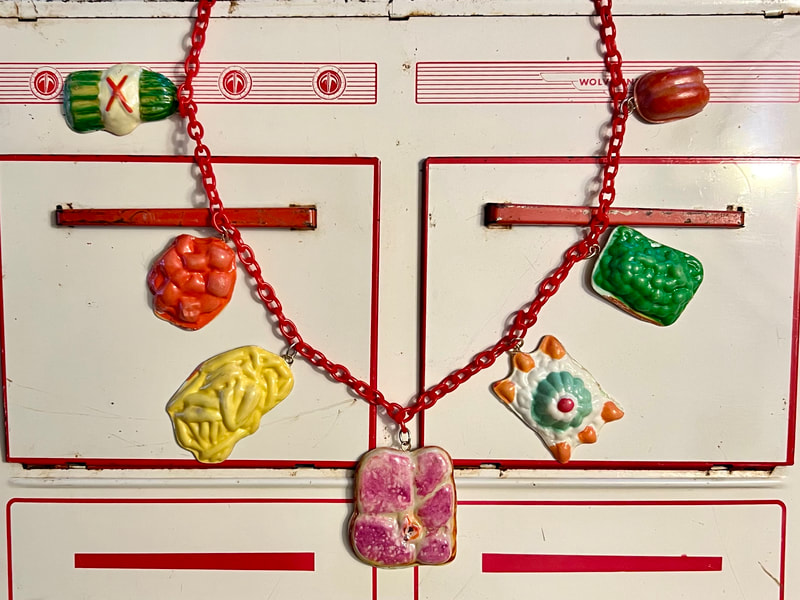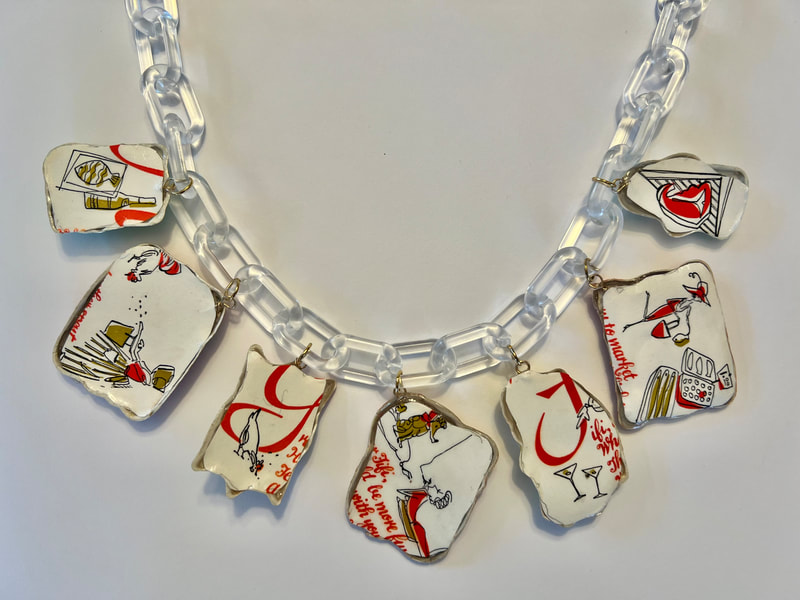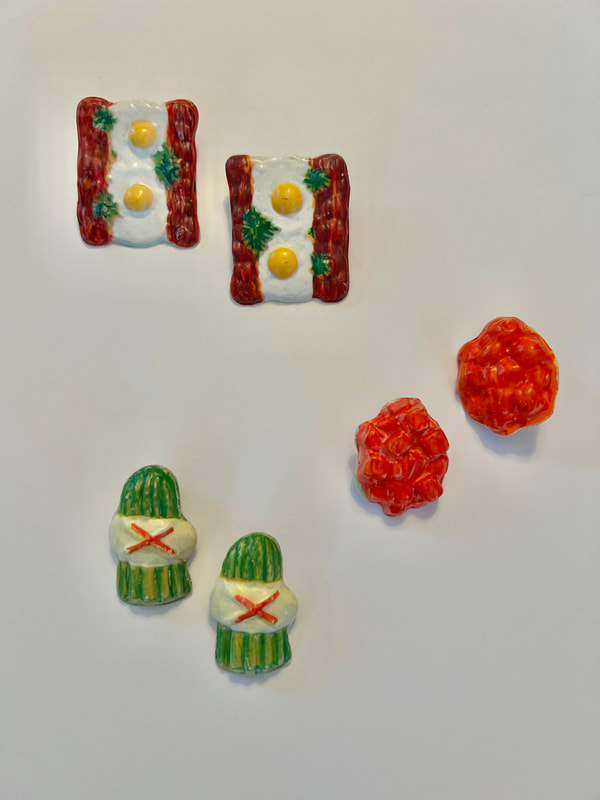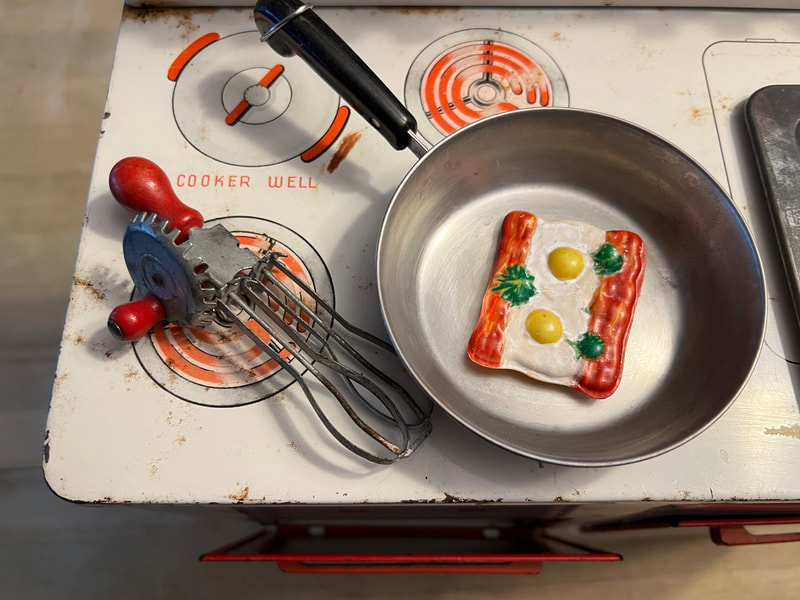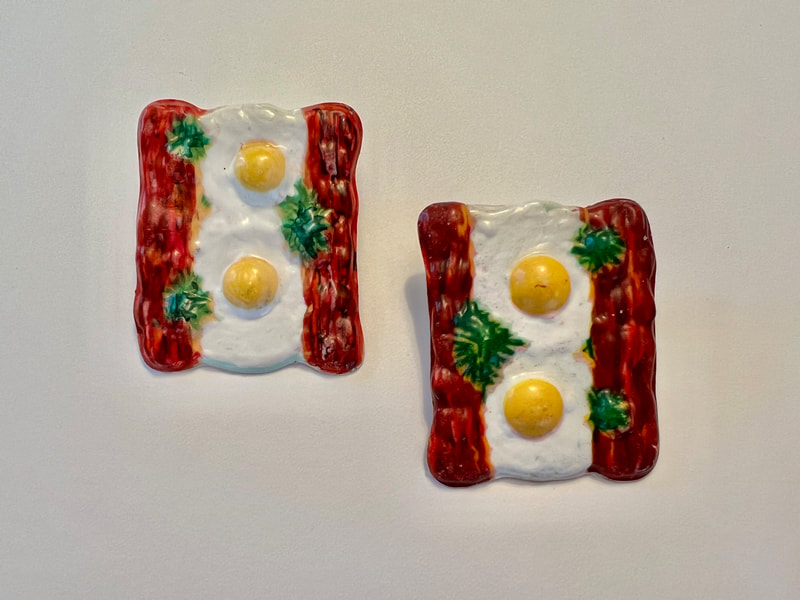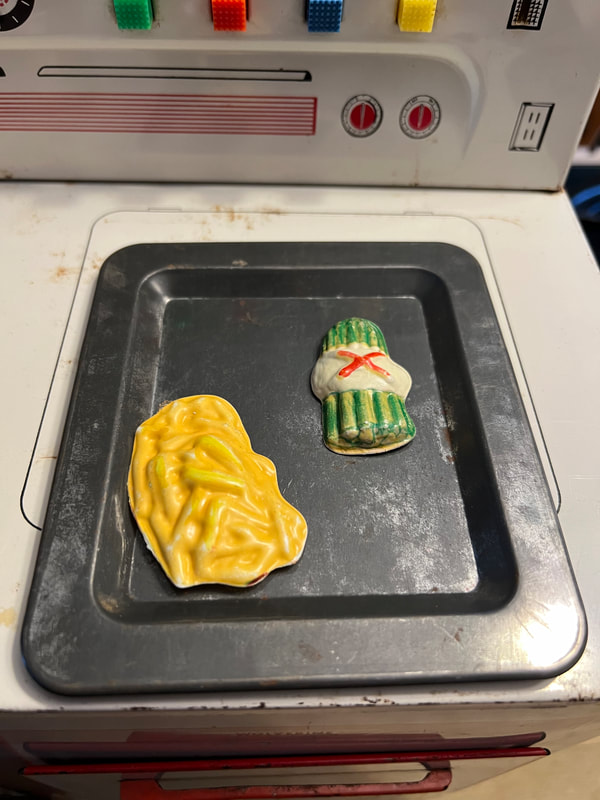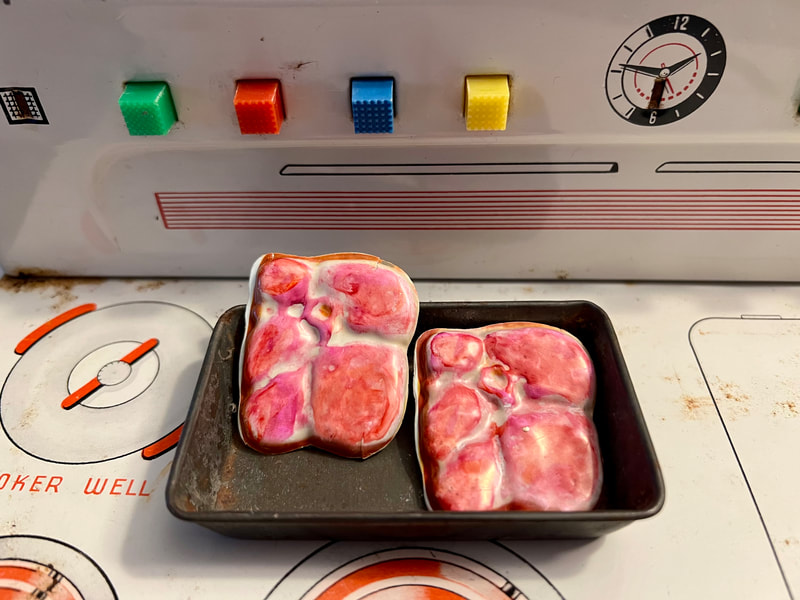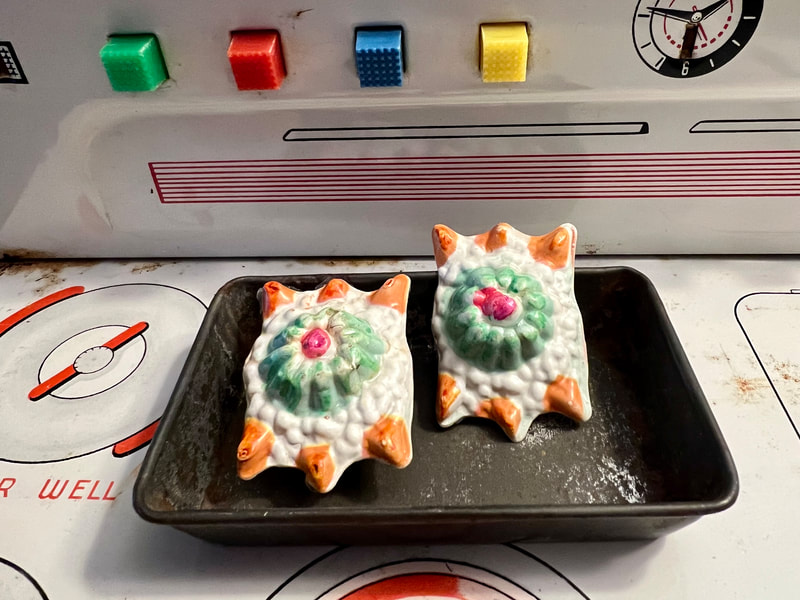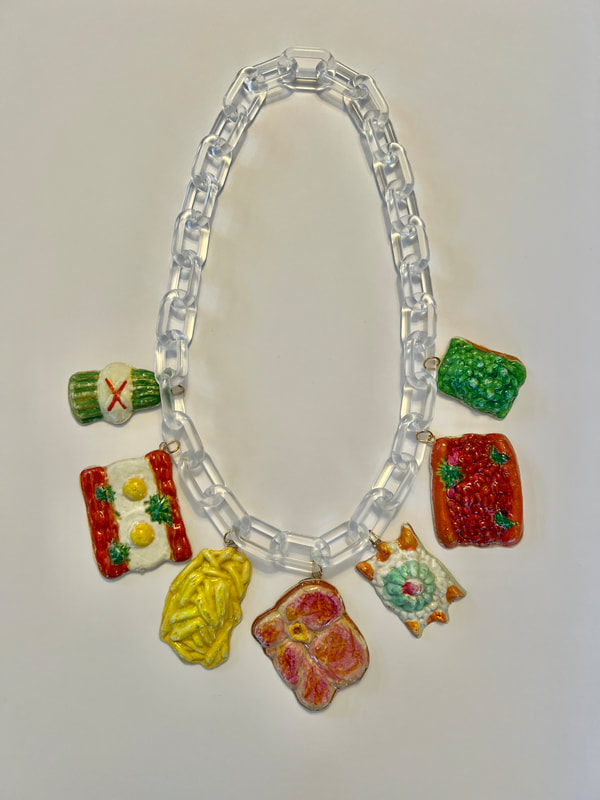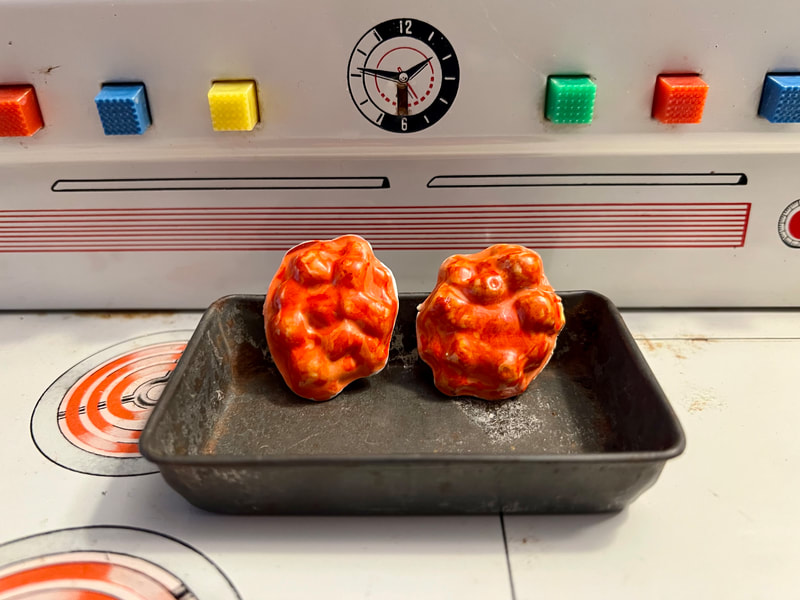Children’s play-food is a food “facsimile”, and as such, a fantastic metaphor for American food. Culturally, appearance and quantity has achieved total value domination. We see this in all aspects of American life, including the food we eat. That food look consistent, colorful and ideal, is far more important than taste and even nutrition. In the 1950s, the fervor for the “American Dream” reached religious status in its power to dictate behavior and decision making. The marketing of food as a lifestyle of convenience overtook the American dinner table. As a society, the obsession with the appearance of food is so extreme that we willingly harm our own health in service to the accepted food iconography.
The celluloid play food that is central to this body of work is an extreme example of superficiality. Each food item is a thin protoplastic veneer, hollow and fragile. Colors are directly from the paint box and lack any subtlety. The insubstantiality of these toys is beautifully reminiscent of the nutrient bereft products that fill the grocery stores. The 1950s was the beginning of an era of non-food-food. For me, these children’s pretend toys are perfect replicas of food imitations.
This play-food jewelry is part of a larger body of work that is built from found objects and usurps the original associated conventional utility. I love the playfulness of surprising choices and unexpected contexts. Other related series make use of objects such as tatting bobbins, souvenir photo viewers and gum ball machine prizes, to name a few.
The celluloid forms are filled with resin to provide stability and have backings of Ruth McCrea cookbook illustrations from the 1950s. The series is comprised of charm necklaces, pendents, brooches and earrings.
The celluloid play food that is central to this body of work is an extreme example of superficiality. Each food item is a thin protoplastic veneer, hollow and fragile. Colors are directly from the paint box and lack any subtlety. The insubstantiality of these toys is beautifully reminiscent of the nutrient bereft products that fill the grocery stores. The 1950s was the beginning of an era of non-food-food. For me, these children’s pretend toys are perfect replicas of food imitations.
This play-food jewelry is part of a larger body of work that is built from found objects and usurps the original associated conventional utility. I love the playfulness of surprising choices and unexpected contexts. Other related series make use of objects such as tatting bobbins, souvenir photo viewers and gum ball machine prizes, to name a few.
The celluloid forms are filled with resin to provide stability and have backings of Ruth McCrea cookbook illustrations from the 1950s. The series is comprised of charm necklaces, pendents, brooches and earrings.
